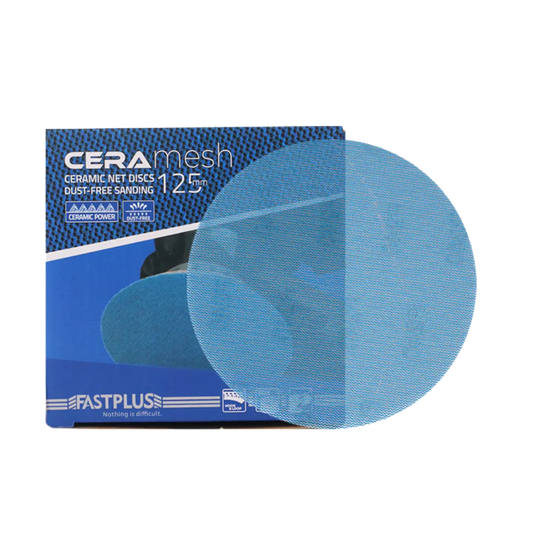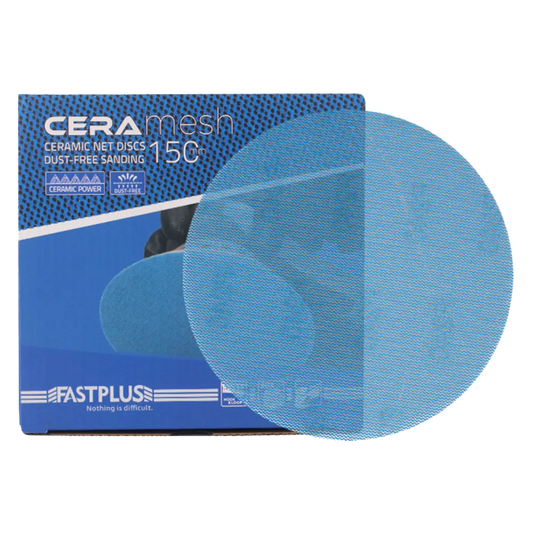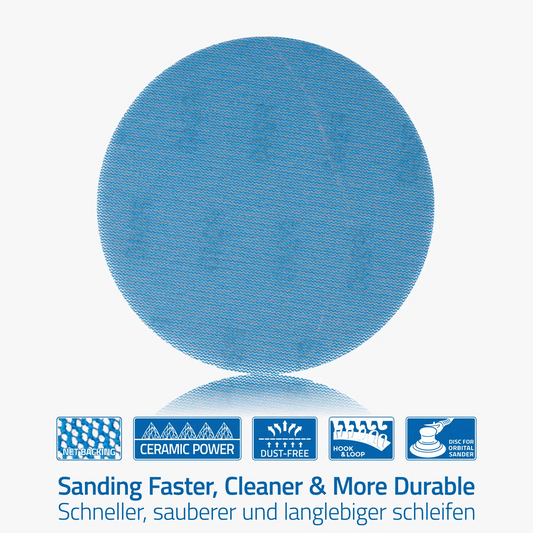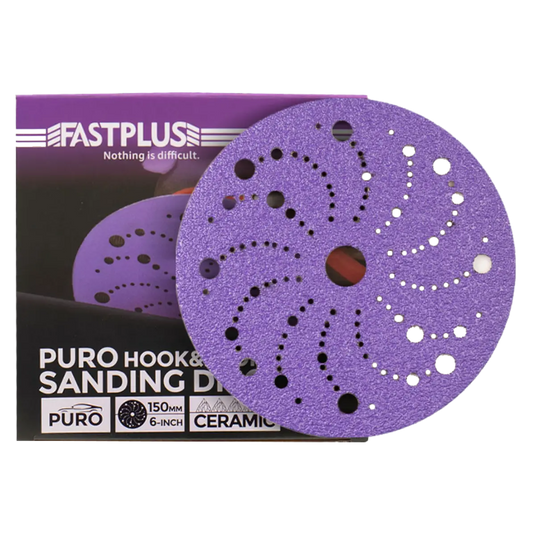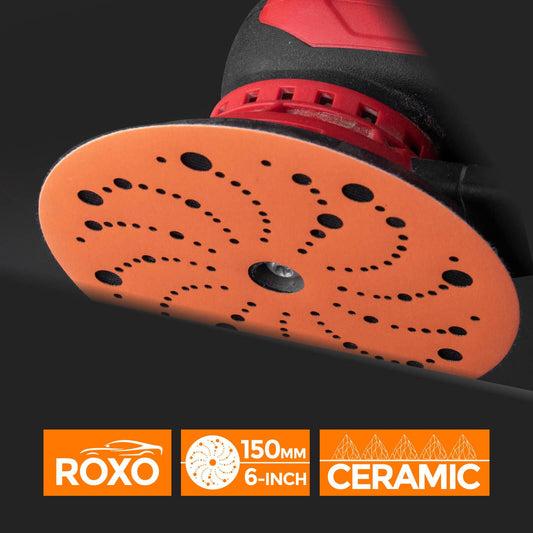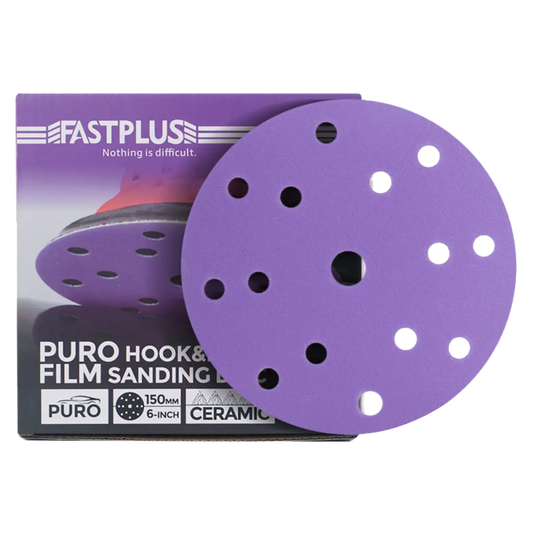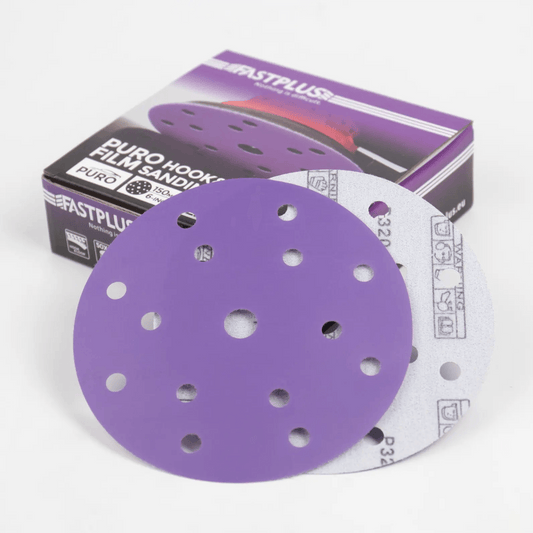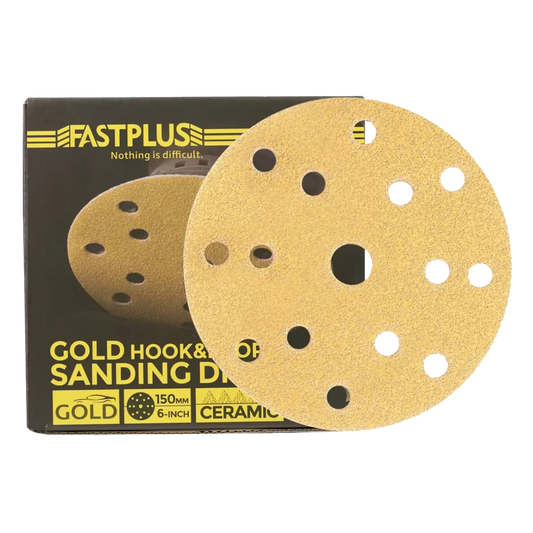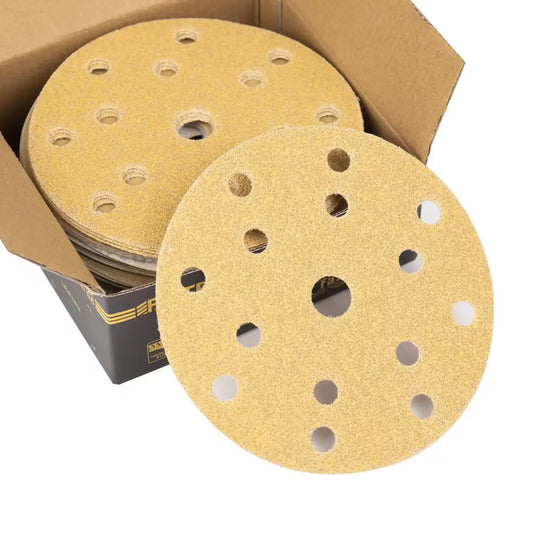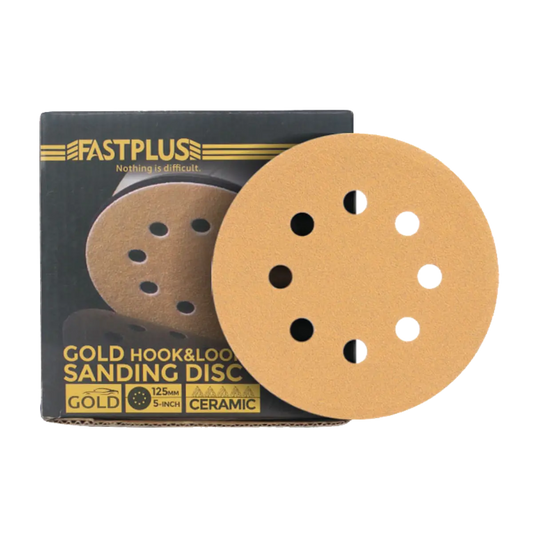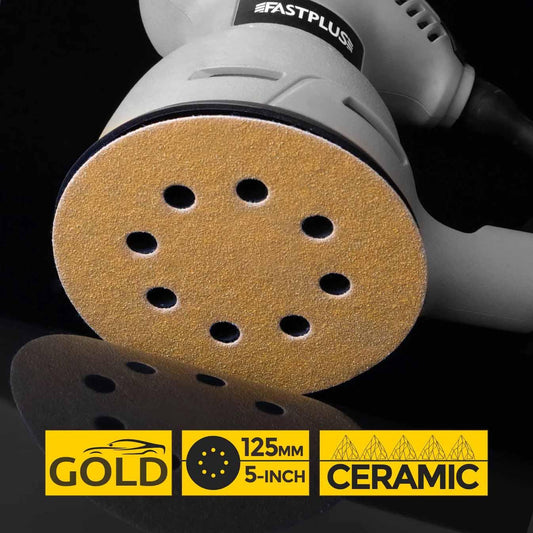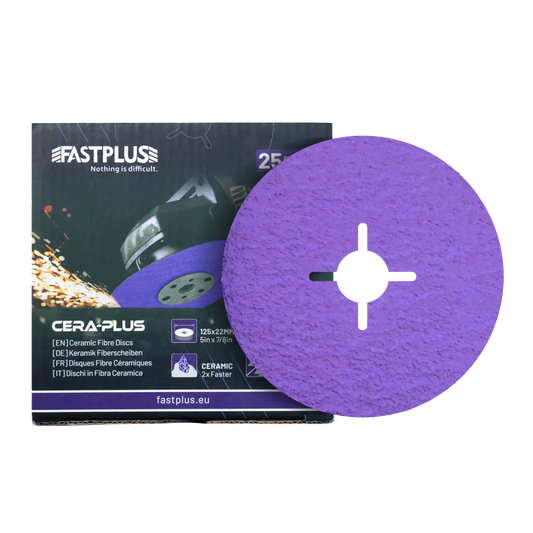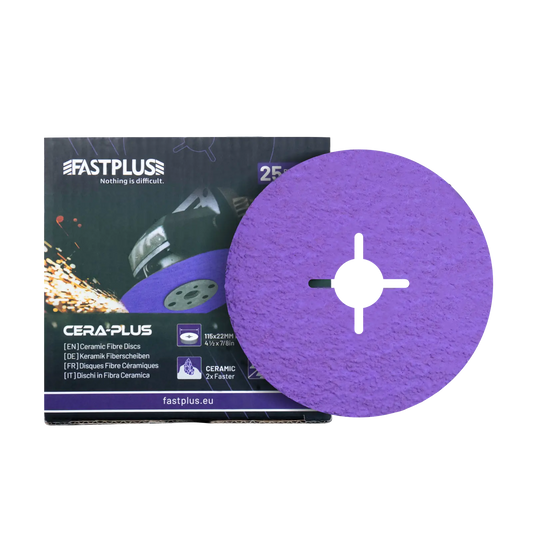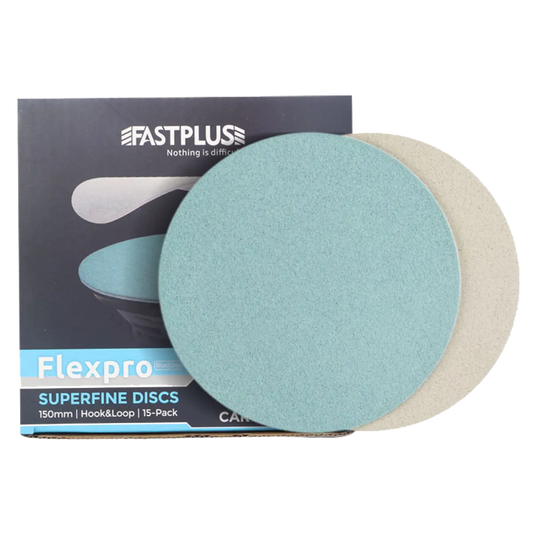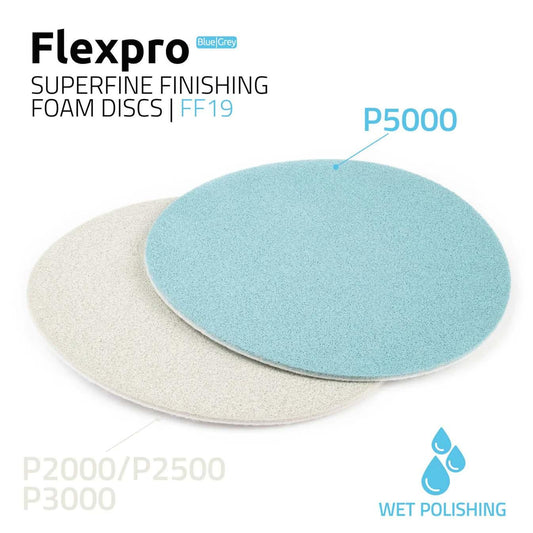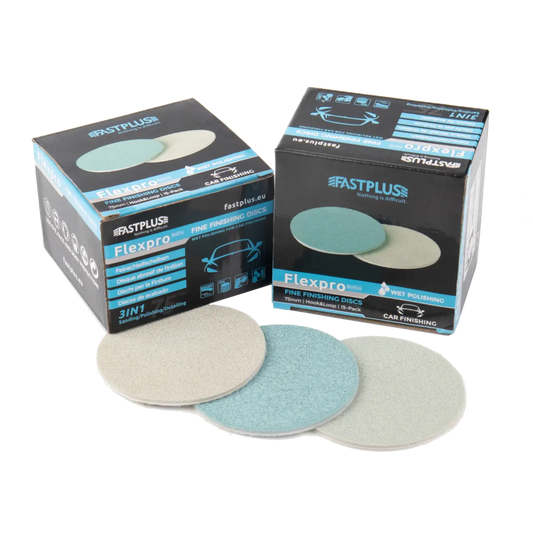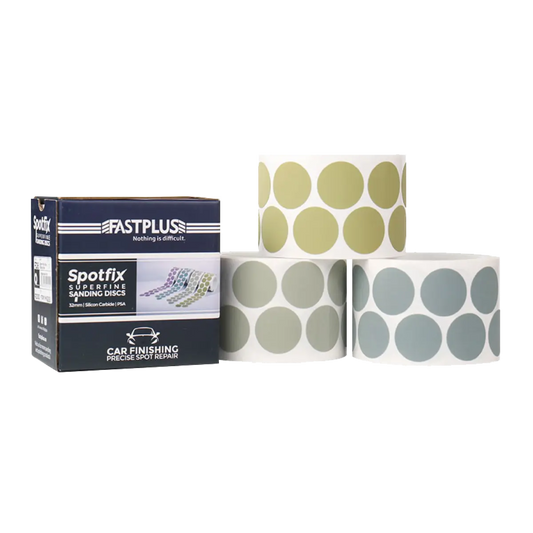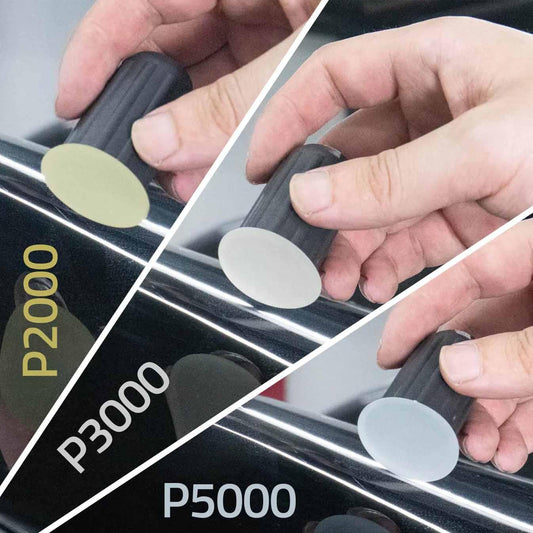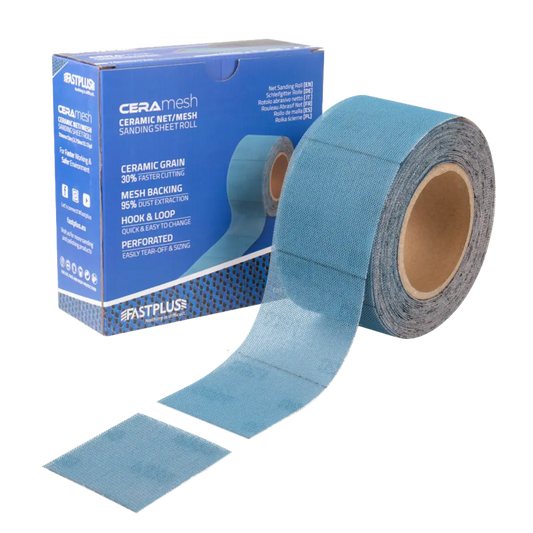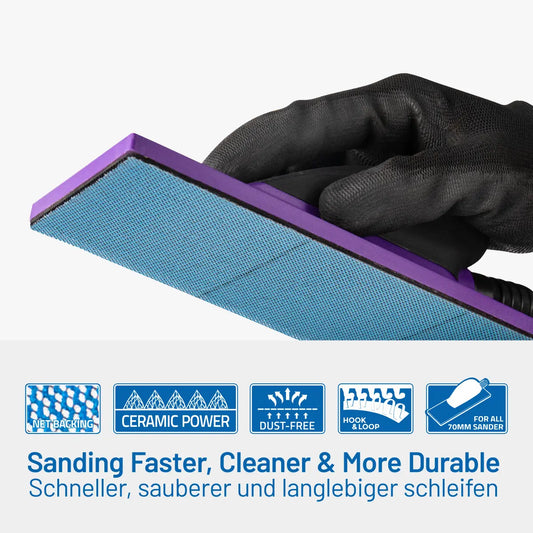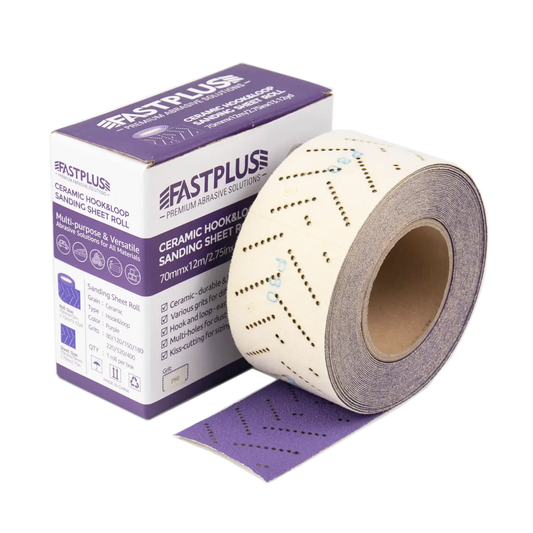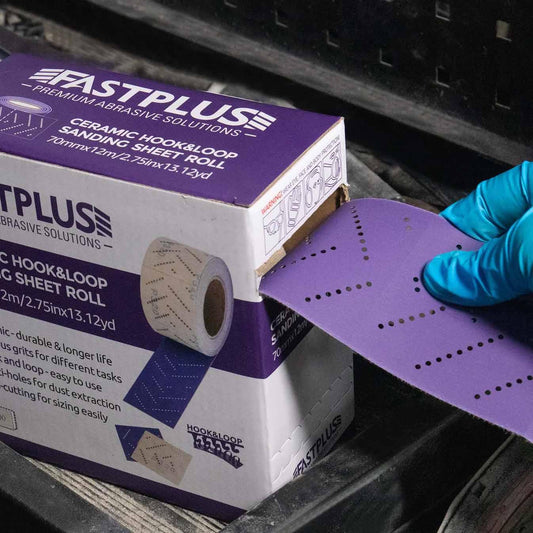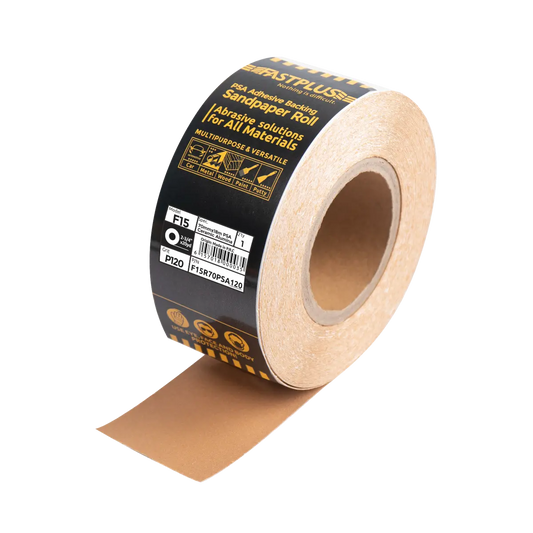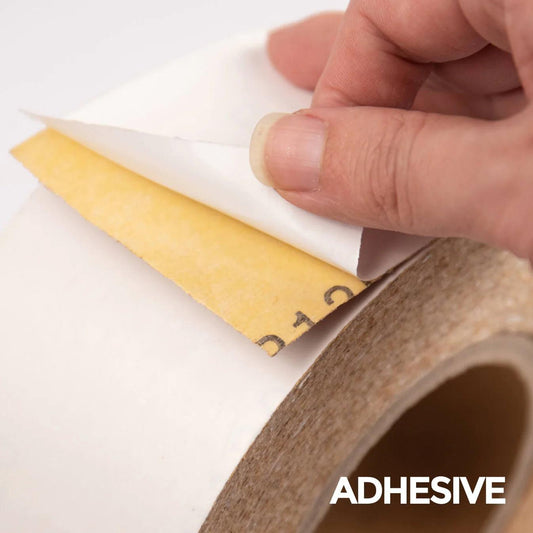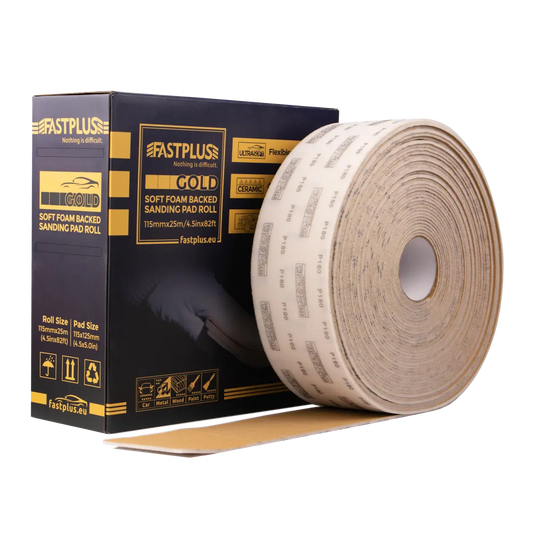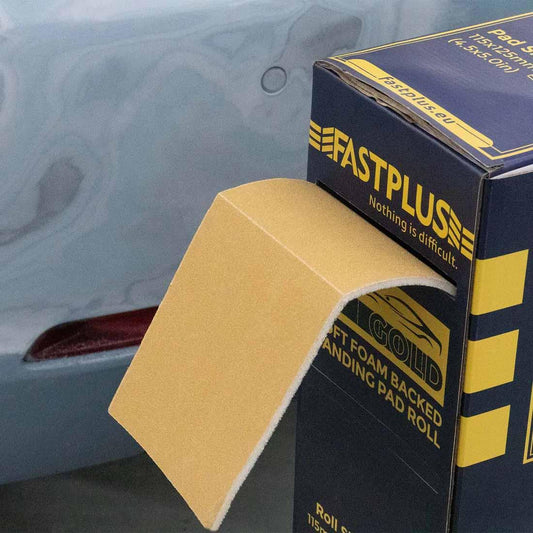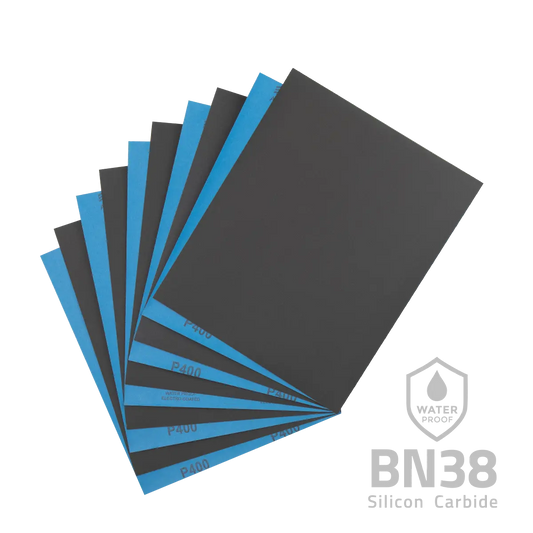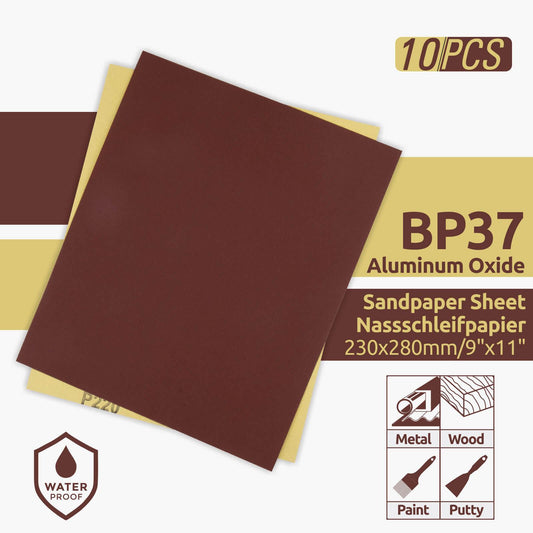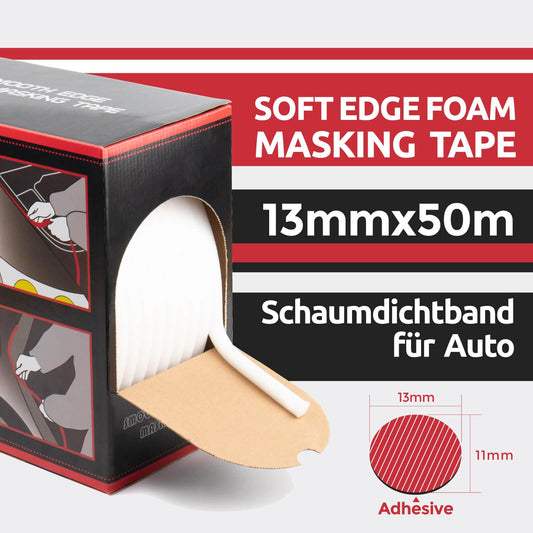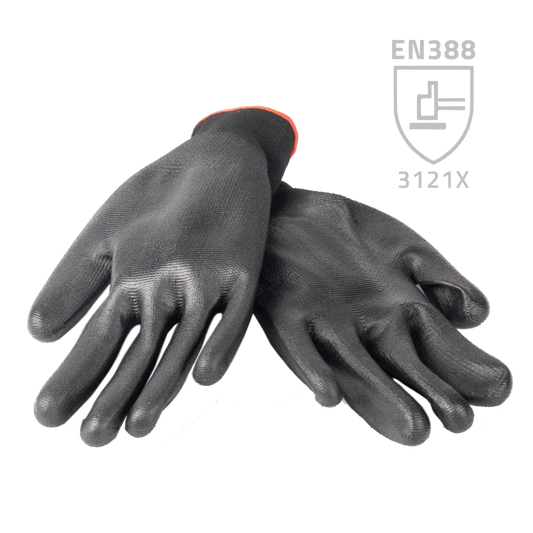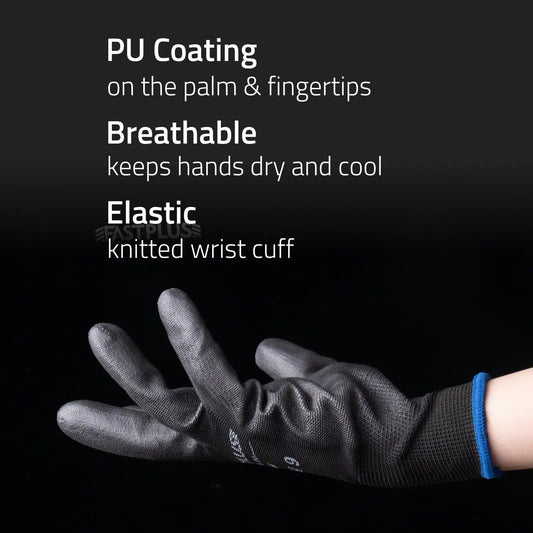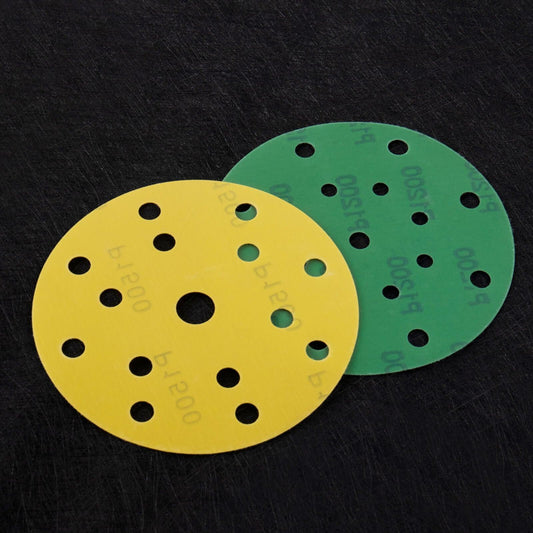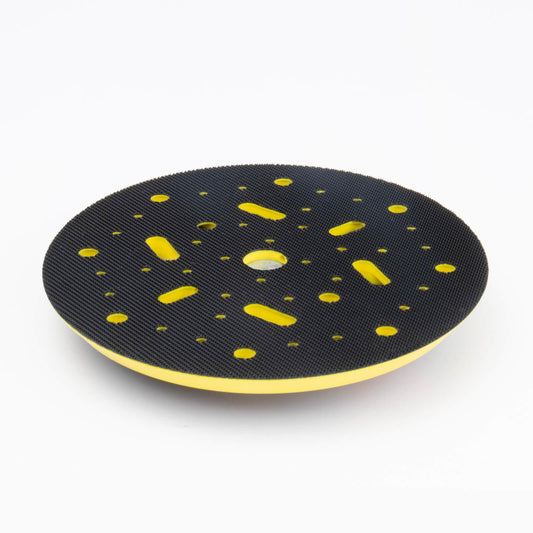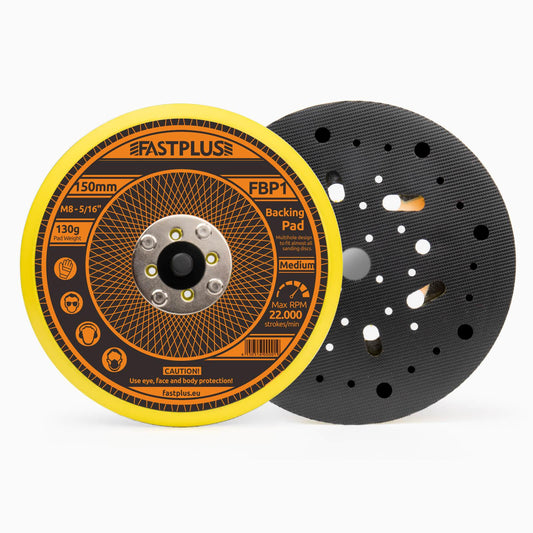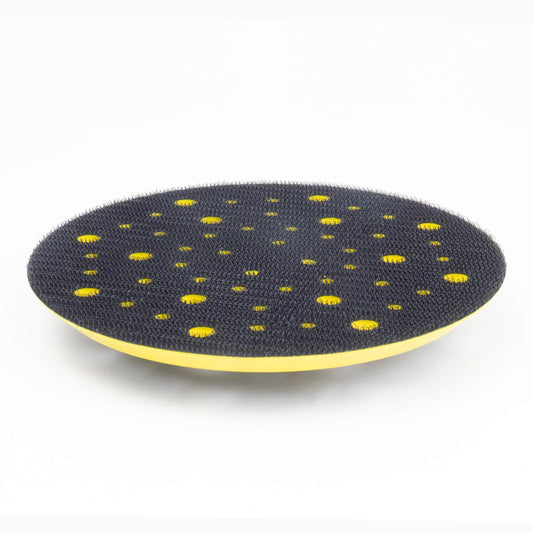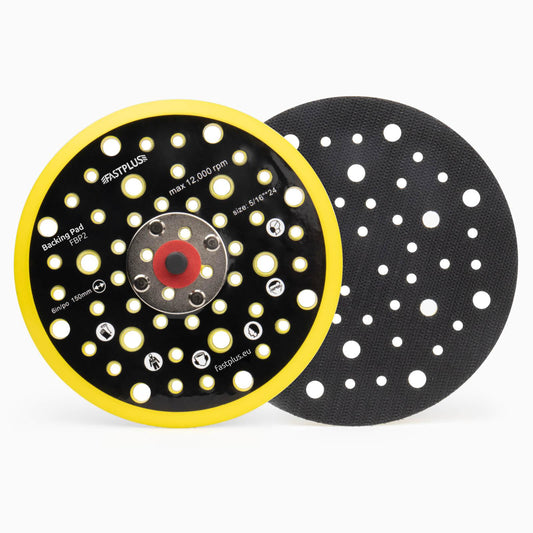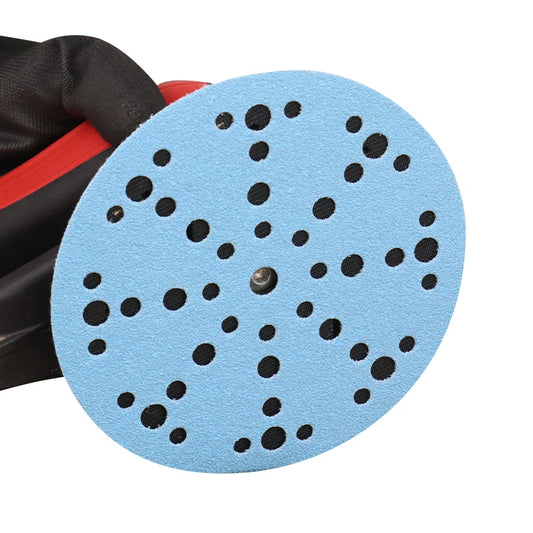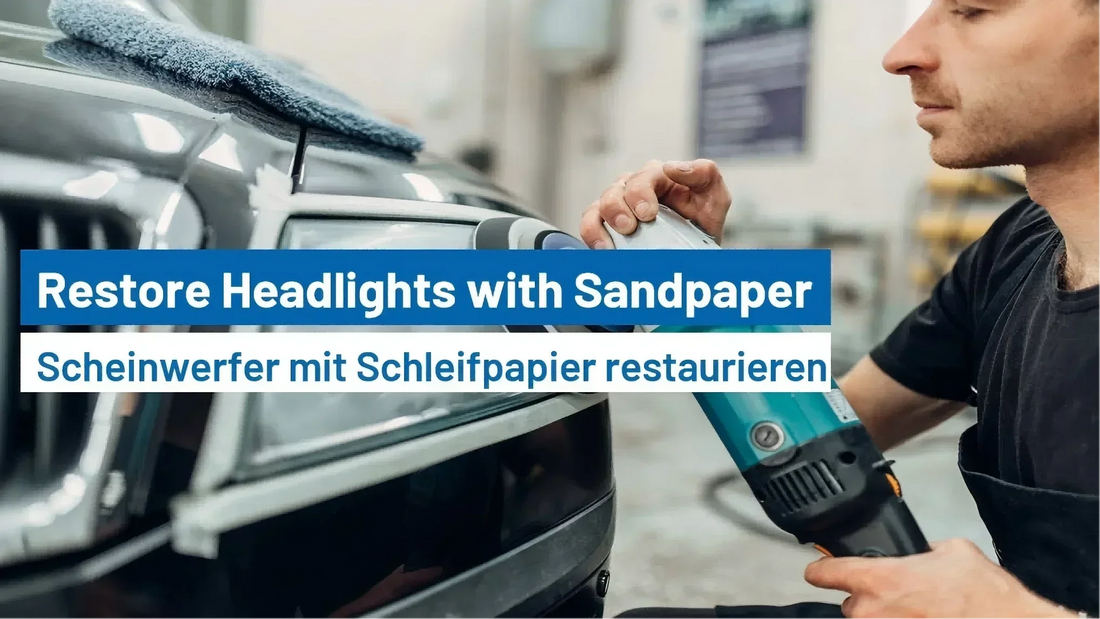
How to Restore Headlights with Sandpaper?
Over time, car headlights can become foggy, yellowed, or scratched due to UV exposure, road debris, and environmental factors. This not only makes your vehicle look older but also reduces nighttime visibility and safety. The good news? You can easily restore your headlights using sandpaper and a few other tools—no expensive kits required.
In this guide, we’ll walk you through how to bring your headlights back to crystal-clear condition using sandpaper, mesh sanding discs, and finishing foam discs—all available from our online store.
✨ Why Headlights Get Cloudy
Before we dive into the how-to, it’s helpful to understand what causes headlights to degrade in the first place.

Most modern headlights are made of polycarbonate plastic, which is durable but sensitive to UV rays. Over time, the protective coating on your headlights wears down, allowing oxidation and small surface scratches to accumulate. This leads to a cloudy or yellowed appearance that affects light output.
🛠 Tools & Materials You’ll Need
You don’t need a pro detailing shop to get professional results. Here's what you'll need:
🔧 Tools:
- Masking tape
- Spray bottle filled with water
- Microfiber cloths
- Polishing compound or plastic polish
- UV sealant or protective clear coat
- Drill with backing pad (optional, for faster results)
🧽 Abrasives from our store:
- Sandpaper sheets or rolls (400, 800, 1000, 1500, 2000 grit)
- Mesh sanding discs (for uniform scratch pattern and dust-free work)
- Finishing foam disc (for final polish and clarity)
📋 Step-by-Step Guide to Restoring Your Headlights
Step 1: Clean the Headlights
Start by washing the headlight lenses with soap and water to remove dirt, bugs, and road grime. Dry them thoroughly with a microfiber cloth.
Step 2: Mask Off the Area
Use masking tape to protect the paint, trim, and rubber seals around the headlights. This step is crucial to avoid damaging your car's finish while sanding.

Step 3: Wet Sand with 400 Grit Sandpaper
Soak a piece of 400 grit sandpaper in water for a few minutes. Wet the headlight lens and begin sanding in horizontal strokes. Keep the surface wet at all times to reduce friction and avoid heat buildup. This step removes the oxidized top layer and deep scratches.
💡 Tip: Use a mesh sanding disc here if you prefer a uniform scratch pattern and easier debris removal.
Sand until the surface feels smooth and evenly dull.
Step 4: Wet Sand with 800 Grit
Next, move up to 800 grit sandpaper. This refines the scratches made by the coarser grit. Sand in vertical strokes (90 degrees to the previous direction) to help eliminate swirl patterns.
Continue spraying water as you work. This step prepares the surface for the finer abrasives to follow.

Step 5: Wet Sand with 1000, 1500, and 2000 Grit
Repeat the process with 1000 grit, then 1500 grit, and finally 2000 grit sandpaper. Always change the sanding direction slightly and keep everything wet.
Each pass removes finer and finer scratches, gradually restoring transparency.
🌟 Our sandpaper rolls make this step easier for hand sanding—just cut the length you need and go!
By the end of the 2000-grit sanding, your headlights will appear hazy but smooth and uniform in texture.
💎 Optional: Use a Finishing Foam Disc
For that extra-clear finish, use a finishing foam disc on a drill or hand pad along with a small amount of polishing compound. This step removes any remaining micro-scratches and enhances clarity.
Polish in slow, overlapping circles. After a minute or two, wipe clean with a microfiber towel.
⚠️ Do not use aggressive pads or high RPMs—they could melt the plastic surface.
🛡 Step 6: Apply a Protective UV Sealant
Once your headlights are clean, dry, and crystal clear, it’s time to lock in the results.
Apply a UV-resistant sealant or headlight clear coat to protect your lenses from future oxidation. Without this, the plastic will degrade again within a few months.
Follow the product instructions and allow it to cure fully before exposing your car to water or sunlight.
⏱ How Long Does It Take?
Expect the full process to take about 1–2 hours depending on the condition of your headlights and your level of experience.
📦 Best Products to Use from Our Store
We recommend the following abrasive products from our online store:
🟠 Sandpaper Sheets:
- Grits: 400, 800, 1000, 1500, 2000
- Premium aluminum oxide for smooth cutting
- Waterproof backing for wet sanding

🔵 Mesh Sanding Discs:
- Ideal for consistent scratch patterns and longer life
- Reduced clogging and easy to rinse off
🟣 Finishing Foam Discs:
- Soft, flexible, and perfect for the final polishing stage
- Use with any common plastic polish or headlight compound
🟡 Sandpaper Rolls:
- Flexible for hand sanding tight spots
- Tear what you need, save the rest for next time
✅ Key Tips for Best Results
- Always keep the surface wet while sanding.
- Change sanding direction with each grit.
- Don’t rush—take your time to get even results.
- Clean the headlight between sanding steps.
- Always apply UV protection after polishing.
💬 Frequently Asked Questions
Can I use a drill for sanding?
Yes, if you have a hook-and-loop backing pad and sanding discs. This speeds up the process but requires more control. Never use high-speed tools with coarse grits.
Do I need a clear coat afterward?
Absolutely. Skipping UV protection will cause the plastic to re-oxidize within weeks. A spray-on headlight sealant or clear coat is a must.
How often should I restore my headlights?
With proper sealing, once every 1–2 years is usually enough.
Can I use household items like toothpaste instead of sandpaper?
Toothpaste works only for very minor hazing and doesn’t provide lasting clarity. Sandpaper is far more effective for full restoration.
🔚 Conclusion
Restoring your headlights with sandpaper is not only budget-friendly but also incredibly satisfying. With a few quality abrasive tools and a little elbow grease, you can dramatically improve both the look and safety of your vehicle.
At our store, we carry a full range of sandpaper sheets, mesh sanding discs, foam finishing discs, and sandpaper rolls—everything you need for a headlight restoration project done right.

🛒 Ready to Get Started?
Browse our [Abrasive Products Collection] now and pick the perfect tools for your next DIY headlight restoration. Have questions? Contact our support team—we’re here to help!


